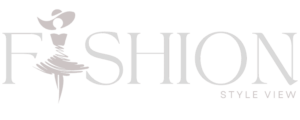.In the dynamic realm of fashion, the bottom line serves as a compass guiding a company’s financial journey. This critical metric, synonymous with net income or profit, epitomizes the culmination of a business’s fiscal efforts. Beyond mere arithmetic, the bottom line encapsulates the intricate dance between revenue and expenses, unveiling the financial health and vitality of a fashion company.
A fashion company covers a lot of things like designing, and selling diverse clothes, as well as accessories and related fashion items. It possesses multiple channels that help in selling like online, offline, wholesale, or retail. The bottom line of a fashion company is just like a big building with diverse pillars that provide support to it. In this article, we will discuss how we can boost it up utilizing different techniques and understanding its core principles.
The Nuances of a Fashion Company’s Bottom Line
A fashion company, an orchestrator of style and trend, navigates a multifaceted landscape. Operating in diverse market segments such as haute couture, ready-to-wear, mass market, or fast fashion, these entities leverage various distribution channels—online, offline, wholesale, or retail. The bottom line for a fashion company intricately weaves through a tapestry of factors, including product demand, production costs, raw material prices, marketing expenditures, operational overheads, tax obligations, competitive landscapes, innovation endeavors, and pivotal customer satisfaction and loyalty.
How to Improve the Bottom Line for a Fashion Company
Unlocking the full potential of a fashion company’s bottom line involves a strategic interplay of key factors. To bolster the bottom line, avenues of revenue can be broadened by expanding the customer base, increasing sales volume, elevating prices, diversifying product portfolios, entering new markets, and fostering brand awareness. Simultaneously, meticulous cost management becomes paramount—optimizing production, negotiating favorable deals, automating tasks, and capitalizing on tax incentives. There are numerous ways of working on the main concern of a fashion organization, for example,
Expanding the income
This can be done by growing the client base, expanding the sales volume, raising the prices, enhancing the product portfolio, entering new business sectors, or making brand awareness and recognition.
Reducing the costs
This can be done by optimizing the production cycle, lowering the cost of raw materials, reevaluating or automating some tasks, eliminating unnecessary or inefficient spending, negotiating more favorable deals with suppliers or wholesalers, or exploiting tax incentives or subsidies.
Improving the quality
This can be done by working on the design, functionality, durability, and allure of the products, using high-quality materials and craftsmanship, ensuring consistent and timely delivery, offering excellent customer service and support, or implementing quality control and assurance measures.
Growing and distinguishing
This can be done by creating unique and original products, pursuing or setting the latest trends, adapting to changing customer preferences and requirements, incorporating new technologies or features, or developing core areas of strength for a distinctive brand identity and image.
Strategic communication
Effectively communicating bottom-line achievements to stakeholders is a pivotal aspect of a fashion company’s trajectory. Whether through reports, press releases, events, webinars, newsletters, blogs, or testimonials, transparent communication not only underscores financial results but also sheds light on the company’s successes, challenges, and expressions of gratitude.
Benefits of Improving the Bottom Line for a Fashion Company
Here are some of the benefits of improving the bottom line of a fashion company:
- Increasing the profitability and growth potential of the business
- Attracting more investors and funding opportunities
- Gaining a competitive edge and a larger market share
- Improving the repute and believability of the business
- Boosting the morale and motivation of the employees
- Creating more value and satisfaction for the customers
Challenges of Improving the Bottom Line for a Fashion Company
- Facing more pressure and expectations from the stakeholders
- Understanding the market’s ups and downs and how to cope with unexpected things
- Know how to make a balance between short-term and long-term goals
- Managing the changes and transitions in the business operations and culture
- Maintaining the ethical and social responsibility of the business
Conclusion
The bottom line serves not only as a financial metric but as a compass guiding a fashion company’s trajectory. A holistic and strategic approach, entwining revenue expansion, cost optimization, quality elevation, innovation, and ethical practices, ensures enduring success in the dynamic fashion industry. Transparent communication becomes the linchpin, bridging the gap between financial accomplishments and stakeholder understanding.
FAQs
Top Line vs. Bottom Line. What difference between them?
The top line represents the total amount generated by the fashion organization while the bottom line showcases the net profit. While the top line unveils a fashion company’s revenue generation, the bottom line delineates the profits retained after covering all expenses.
What is the average bottom line for a fashion company?
Industry reports suggest an average net profit margin of around 10% for fashion companies. This metric implies that, on average, a fashion company retains $10 in profit for every $100 in revenue.
How can a fashion company measure its bottom-line performance?
Various financial ratios and metrics such as net profit margin, return on assets, return on equity, earnings per share, and cash flow facilitate the evaluation of a fashion company’s profitability, efficiency, and liquidity.
How can a fashion company improve its bottom line without compromising its quality or values?
Maintaining quality and values while enhancing the bottom line necessitates a sustainable and ethical approach. This involves eco-friendly practices, reduced environmental impact, fair trade support, social contributions, and community engagement.
How can a fashion company communicate its bottom-line achievements to its stakeholders?
A fashion company can communicate its bottom-line achievements to its stakeholders by using various channels and methods, such as publishing annual reports. Moreover issuing press releases, hosting events or webinars, creating newsletters or blogs, or sharing testimonials or reviews. These channels and methods can help the fashion company showcase. Its financial results, highlight its successes and challenges and express its gratitude and appreciation.
Top of Form


